When it comes to gardening, most people think of planting annual vegetables that need to be replanted each season. But did you know that there is a whole world of perennial vegetables that can be grown in your garden and provide you with a yearly harvest without the need for replanting? That’s right, by incorporating perennial vegetables into your garden, you can enjoy a continuous supply of fresh, nutritious food that requires minimal maintenance.
Perennial vegetables are a great addition to any garden, offering a range of flavors and nutritional benefits. From the hearty globe artichokes and asparagus to the tangy sorrel and nutritious rhubarb, there are numerous options to choose from. These plants can be grown in most zones and provide delicious, homegrown produce throughout the year.
In this article, I will guide you through the world of perennial vegetables, sharing tips on how to grow them, when to harvest them, and the benefits they bring to your garden. So, let’s dive in and discover the wonders of growing perennial vegetables for yearly harvests!
Key Takeaways:
- Perennial vegetables offer a sustainable source of fresh food year after year.
- They require minimal maintenance and provide extended harvest periods.
- Growing perennial vegetables can enhance the nutritional value of your garden.
- From globe artichokes to rhubarb, there are various options to choose from.
- Start with a few easy-to-grow perennial vegetables and expand your selection over time.
Globe Artichokes – A Hardy Perennial Vegetable
Globe artichokes are attractive perennial vegetable plants that produce large edible flower buds. They are a wonderful addition to any garden, offering both ornamental beauty and delicious harvests. To successfully grow globe artichokes, there are a few key factors to consider.
Sun and Soil Requirements: Globe artichokes thrive in full sun and require well-drained soil to prevent waterlogging and root rot. It’s important to ensure that the soil is moist but not overly wet. Adding organic matter to the soil will provide additional nutrients for healthy plant growth.
Planting: Globe artichokes can be started from root divisions or seeds. If using root divisions, plant them 24 to 36 inches apart to allow ample space for the plants to develop. If starting from seeds, sow them directly into well-prepared soil, following the recommended depth and spacing indicated on the seed packet.
Hardiness: Globe artichokes are marginally hardy in Zones 6-7 and fully hardy in Zones 8-10. If you live in a colder climate, it’s important to provide winter protection for the plants through mulching or covering them with a protective layer. This will help them survive the winter and continue to thrive in the following growing season.
Harvesting: The best time to harvest globe artichokes is when the flower buds are still tightly closed. This ensures optimal flavor and tenderness. Harvesting the buds before they fully open also prevents the development of the inedible choke. Simply cut the buds from the plant using a sharp knife or pruners.
Benefits of Growing Globe Artichokes
Globe artichokes offer numerous benefits to gardeners. Here are a few reasons why you should consider growing them in your garden:
- Attractive foliage and striking flower buds make them a visually appealing addition to any landscape.
- Artichokes are a versatile ingredient that can be enjoyed in a variety of culinary dishes.
- As a perennial vegetable, globe artichokes provide a reliable source of fresh produce year after year.
- They are packed with nutrients and offer various health benefits, such as aiding digestion and promoting liver function.
By incorporating globe artichokes into your garden, you can enjoy their beauty, flavor, and nutritional value while reaping the rewards of a low-maintenance perennial vegetable.
| Aspect | Tips |
|---|---|
| Sunlight | Full sun |
| Soil | Moist, well-drained soil |
| Spacing | 24-36 inches apart |
| Hardiness | Zones 6-7 (marginally hardy), Zones 8-10 (hardy) |
| Harvesting | Before flower buds fully open |
Asparagus – A Delicious Early Spring Harvest
Asparagus is a hardy perennial vegetable that can be harvested in early spring. It requires full sun and moist, well-drained soil. Asparagus is usually grown from rooted crowns, planted 12 inches apart in trenches. It is important to leave the plants unharvested in the first year to establish their roots. By the third year, you can start harvesting the spears when they reach ½ inch in diameter. Asparagus is hardy in Zones 4-8.
- Delicious early spring harvest
- Low maintenance perennial vegetable
- Highly productive
- Long lifespan (up to 20 years)
- Rich in vitamins A, C, and K
Asparagus planting and care tips:
- Choose a sunny spot with well-drained soil.
- Prepare the soil by adding organic matter.
- Plant asparagus crowns in trenches, placing them 12 inches apart.
- Allow the plants to establish for the first year without harvesting.
- Water regularly, ensuring the soil remains consistently moist.
- Mulch around the plants to suppress weeds.
- Fertilize in early spring and after the final harvest.
- Harvest spears when they reach ½ inch in diameter, cutting them at ground level.
“Asparagus is a versatile vegetable that can be enjoyed in various dishes, from grilled asparagus with olive oil and lemon to creamy asparagus soup. Its unique flavor and tender texture make it a favorite among many culinary enthusiasts.” – Maria Martinez, Master Gardener
Asparagus Varieties
There are several asparagus varieties to choose from:
| Variety | Description | Harvest Time |
|---|---|---|
| Jersey Giant | A popular variety with large, tender spears | Early to mid-season |
| Mary Washington | A classic, reliable variety | Early to mid-season |
| Purple Passion | Produces vibrant purple spears | Early to mid-season |
| UC 157 | A high-yielding variety | Mid to late-season |
Jerusalem Artichokes – A Drought-Tolerant Perennial Vegetable
Image: Jerusalem artichokes
If you’re looking for a versatile and hardy perennial vegetable, look no further than Jerusalem artichokes. Also known as sunchokes, these plants are prized for their tasty tubers that can be eaten raw or cooked in a variety of dishes. Not only are they a culinary delight, but they also offer health benefits, making them a great addition to any garden.
Jerusalem artichokes are particularly beneficial for individuals with diabetes due to their unique carbohydrate composition. Unlike most starchy vegetables, Jerusalem artichokes contain a carbohydrate that breaks down into fructose instead of glucose. This allows for a steady release of energy and a lower impact on blood sugar levels.
To grow Jerusalem artichokes, start with tubers planted in the spring. Choose a sunny spot in your garden with fertile, well-drained soil. These plants thrive in full sun, requiring at least six hours of direct sunlight each day. When planting, space the tubers about 12-18 inches apart and plant them at a depth of 3-5 inches. As they grow, Jerusalem artichokes will reach heights of 6-10 feet, adding a beautiful vertical element to your garden.
The tubers will begin to form in late summer and can be harvested after the first frost. To gather them, simply dig into the soil and carefully remove the tubers. Be sure to leave a few tubers in the ground to propagate new plants for the following season.
Jerusalem artichokes are hardy in Zones 4-9, making them suitable for a wide range of climates. Their drought tolerance and ability to grow in poor soils make them an excellent choice for gardeners facing challenging conditions. With proper care and maintenance, these perennial artichokes will continue to provide you with a bountiful harvest year after year.
Jerusalem Artichokes Planting Guide
| Planting Time | Soil Type | Sun Exposure | Spacing | Harvest Time | Hardiness Zones |
|---|---|---|---|---|---|
| Spring | Fertile, well-drained | Full sun | 12-18 inches apart | After the first frost | Zones 4-9 |
Onions – A Versatile Perennial Vegetable
When it comes to growing perennial vegetables, onions are a versatile and essential addition to any garden. Whether you’re a fan of their pungent flavor or simply enjoy having a staple vegetable on hand, perennial onions offer a convenient and reliable source of fresh produce.
There are different varieties of perennial onions that you can choose from. Two popular options are bunching onions and Egyptian onions.
Bunching Onions
Bunching onions, also known as scallions or green onions, are an excellent choice for those who want a continuous harvest throughout the year. These onions don’t form large bulbs like traditional onions but instead grow in clusters of slender, flavorful stalks.
To grow bunching onions, select a sunny location in your garden with well-drained soil that is rich in organic matter. You can plant them as sets, seeds, or transplants in the spring. Space the plants about 4-6 inches apart to allow for proper growth. As they mature, you can harvest both the roots and the tops to enjoy their full flavor.
Egyptian Onions
Egyptian onions, also called tree onions or walking onions, are a unique perennial onion variety that produces small bulbils on the top of their stems. These bulbils can be used as regular onions or planted to grow more onions, hence the name “walking onions.”
Like other onions, Egyptian onions thrive in full sun to partial shade and well-drained soil. They can be planted in the spring as sets or transplants and spaced 6-8 inches apart. With their distinctive appearance and flavorful bulbs, Egyptian onions are sure to add a touch of uniqueness to your garden.
| Onion Variety | Planting Method | Spacing | Hardiness Zones |
|---|---|---|---|
| Bunching Onions | Sets, seeds, or transplants | 4-6 inches apart | Zones 4-8 |
| Egyptian Onions | Sets or transplants | 6-8 inches apart | Zones 4-8 |
Remember to provide adequate water and fertilizer for your perennial onions to ensure healthy growth. With their resilience and ability to come back year after year, these versatile vegetables are a must-have for any perennial vegetable garden.
Radicchio – A Nutritious Perennial Vegetable
Radicchio is a hardy biennial vegetable that produces dark red leaves with white veins. It is grown for its tightly clumped heads and is similar to cabbage or romaine lettuce. Radicchio prefers full sun and fertile, well-drained soil. It can be planted from seeds in spring or autumn and harvested in late fall when the heads are firm and have deep color. Radicchio is hardy in Zones 4-8.
When it comes to nutritious leafy greens, radicchio is a fantastic choice for your garden. Not only does it add vibrant color to your salads, but it also packs a punch in terms of health benefits. Radicchio is rich in vitamins A and K, which are essential for maintaining healthy eyes, bones, and blood clotting. Additionally, it contains antioxidants that help protect against chronic diseases and strengthen the immune system.
I love growing radicchio in my garden. Its bold flavor and beautiful appearance enhance my salads and add a touch of elegance to any dish. Plus, the fact that it’s a perennial vegetable means I don’t have to worry about replanting it every year.
When starting radicchio from seeds, sow them directly into the garden bed in early spring or late summer. Ensure the soil is well-prepared and moist for successful germination. Radicchio plants thrive in cooler weather, making them an excellent choice for fall and cool-season gardens. Once the heads are firm and have deep color, it’s time to harvest and enjoy their crisp texture and slightly bitter taste.
Benefits of Growing Radicchio
Growing radicchio offers several benefits for both your kitchen and garden:
- Perennial Harvests: As a perennial vegetable, radicchio provides a continuous supply of fresh greens year after year, eliminating the need for replanting.
- Low Maintenance: Radicchio is relatively low-maintenance, requiring minimal care once established. It’s a great option for busy gardeners.
- Ornamental Appeal: With its vibrant color and unique leaf structure, radicchio can be a visually striking addition to your garden landscape.
- Nutritional Value: Radicchio is packed with essential vitamins, minerals, and antioxidants that contribute to a healthy diet.
- Culinary Versatility: Whether enjoyed raw in salads, grilled as a side dish, or added to stir-fries, radicchio offers versatility in the kitchen.
| Zone Range | Temperature Range (°F) | Expected Harvest Time |
|---|---|---|
| Zones 4-6 | Below freezing to below 0°F | Late fall, early winter |
| Zones 7-8 | 10°F to 20°F | Late fall |
| Zones 9-10 | Above 20°F | Winter |
Whether you’re a seasoned gardener or just starting out, radicchio is a rewarding vegetable to grow. Its distinctive flavor and nutritional value make it a valuable addition to any kitchen. Don’t miss out on the opportunity to enjoy this delicious perennial vegetable!
Rhubarb – A Tart Perennial Vegetable
Rhubarb is a hardy perennial vegetable that is grown for its stems. It requires full sun and moist, well-drained soil. Rhubarb should be planted in early spring and spaced 6 feet apart. The plant should be fertilized in early spring and a layer of compost added after harvest. Rhubarb stalks should be harvested during cool weather and only the stems should be used in recipes as the leaves contain oxalic acid and are poisonous. Rhubarb is hardy in Zones 2-9.
Benefits of Growing Rhubarb
- Rhubarb is a perennial vegetable that provides a consistent harvest year after year.
- It can tolerate a range of climates, making it suitable for many gardeners.
- Rhubarb is a low-maintenance plant that requires minimal care once established.
- The tart flavor of rhubarb adds a unique taste to baked goods, jams, and desserts.
- Rhubarb is rich in vitamins, minerals, and antioxidants, making it a nutritious addition to your diet.
Rhubarb Growing Tips
To ensure successful growth of rhubarb, follow these tips:
- Choose a sunny spot in your garden with well-drained soil.
- Plant rhubarb crowns in early spring, with each crown spaced 6 feet apart.
- Fertilize the plants in early spring with a balanced organic fertilizer.
- After harvesting, apply a layer of compost around the base of the plants to replenish nutrients.
- Harvest rhubarb stalks when they are around 10-15 inches long, by pulling them gently from the plant.
- Only use the stems in recipes and discard the leaves, as they are toxic.
Delicious Rhubarb Recipes
Here are some tasty recipes to try using freshly harvested rhubarb:
“Rhubarb Crumble: Mix chopped rhubarb with sugar and layer it in a baking dish. Top with a crumble mixture made with oats, flour, butter, and sugar. Bake until the rhubarb is tender and the crumble is golden and crisp.”
“Rhubarb Compote: Simmer rhubarb with sugar, lemon juice, and a splash of water until it becomes soft and sauce-like. Serve over pancakes or yogurt for a delicious breakfast treat.”
| Recipe | Ingredients | Instructions |
|---|---|---|
| Rhubarb Pie | Rhubarb stalks, sugar, flour, butter, pie crust | 1. Chop rhubarb and mix with sugar and flour. 2. Pour the mixture into a prepared pie crust. 3. Dot the top with butter and cover with another crust. 4. Bake in the oven until the crust is golden and the filling is bubbling. |
| Rhubarb Jam | Rhubarb stalks, sugar, lemon juice | 1. Chop rhubarb and combine with sugar and lemon juice in a saucepan. 2. Cook over medium heat, stirring occasionally, until thickened. 3. Pour the jam into sterilized jars and seal. |
| Rhubarb Muffins | Rhubarb stalks, flour, sugar, baking powder, butter, milk, eggs | 1. Chop rhubarb and mix with dry ingredients. 2. In a separate bowl, combine melted butter, milk, and eggs. 3. Stir wet ingredients into the dry ingredients until just combined. 4. Spoon the batter into muffin cups and bake until golden and cooked through. |
Enjoy the tangy and delicious flavors of fresh rhubarb in these delightful recipes!
Sorrel – A Tangy Perennial Herb
Sorrel is a perennial herb with a tart, lemony flavor that adds a unique zing to soups, stews, salads, and sauces. It’s a versatile ingredient that can elevate the taste of your dishes and provide a refreshing twist to your culinary creations.
Growing sorrel is relatively easy, making it an excellent addition to your herb garden. It thrives in full sun and average soil conditions, requiring minimal maintenance. You can cultivate sorrel from seeds or divided plants, depending on your preference and availability.
To grow sorrel from seeds, simply sow them directly in your garden during the appropriate season. The seeds should be spaced about 6-8 inches apart in rows that are 2 feet apart. Ensure that the soil remains moist during the germination period to facilitate healthy growth.
If you choose to propagate sorrel through divided plants, carefully separate the clumps and replant them in well-prepared soil. Make sure to give them adequate space to spread and thrive.
One of the highlights of growing sorrel is its frost-hardiness. It can withstand Zone 5 temperatures, providing a continuous supply of fresh leaves throughout the growing season. However, it’s worth noting that sorrel tastes best in early spring when it has a milder flavor. As the weather warms, the leaves tend to become slightly bitter.
“Sorrel is a tangy perennial herb that adds a unique and refreshing flavor to various dishes. Growing sorrel is a breeze, and its frost-hardy nature ensures a continuous supply of fresh leaves for your culinary endeavors.”
Overall, sorrel is a delightful perennial herb that adds a tangy punch to your meals. Its vibrant flavor and ease of cultivation make it a valuable addition to your garden. Enjoy the zest and versatility that sorrel brings to your culinary adventures!
Perennial Vegetables for All Seasons
In addition to the specific perennial vegetables mentioned earlier, there are other options for growing perennial vegetables that can provide harvests throughout the year. Some perennial vegetables to consider include watercress, garlic, horseradish, lovage, and kale (usually grown as an annual). These vegetables offer a range of flavors and can be easily grown in most gardens. They require little maintenance and can provide a continuous supply of fresh, nutritious food.
Perennial Vegetable Varieties
When it comes to perennial vegetables, the options are diverse. Here are some popular varieties:
- Watercress: This leafy green thrives in wet environments and adds a peppery flavor to salads and sandwiches.
- Garlic: Known for its pungent flavor, garlic enhances the taste of various dishes while providing numerous health benefits.
- Horseradish: This spicy root vegetable can be grated or used as a condiment, adding a tangy kick to meals.
- Lovage: With a taste similar to celery, lovage is a versatile herb that can be added to soups, stews, and salads.
Kale, although typically grown as an annual, can sometimes exhibit perennial characteristics, making it a worthwhile addition to your perennial vegetable garden. These varieties offer unique flavors and can be incorporated into a variety of dishes to elevate your culinary experience.
Easy-to-Grow Perennial Vegetables
For gardeners seeking low-maintenance options, certain perennial vegetables are particularly easy to grow. Here are some examples:
- Rhubarb: This tart perennial vegetable requires minimal care, and its stalks can be harvested throughout the growing season for pies, jams, and other delectable treats.
- Asparagus: With proper care, asparagus can produce bountiful harvests for years. Once established, this versatile vegetable requires little attention and can be enjoyed in various recipes.
- Chives: These flavorful perennial herbs can be grown in pots or directly in the garden. Chives are easy to maintain and their mild onion-like taste adds a delightful touch to many dishes.
By choosing these easy-to-grow perennial vegetables, you can enjoy a continuous supply of fresh produce with minimal effort. Whether you’re a beginner gardener or someone looking to expand their perennial vegetable collection, these varieties are sure to bring joy and abundance to your garden.
Benefits of Perennial Vegetables for All Seasons
Perennial vegetables offer numerous advantages for home gardeners. Here are some key benefits of incorporating perennial vegetables into your garden:
“By planting perennial vegetables, you can enjoy a sustainable source of fresh, nutritious food year after year. These vegetables require less maintenance compared to annual crops and can significantly reduce the time and effort spent on replanting each season. Additionally, perennial vegetables have the added benefits of enhancing soil health and promoting biodiversity in your garden.”
With their long lifespans and ability to adapt to different climates, perennial vegetables provide a reliable source of sustenance regardless of the season. By diversifying your garden with these resilient and flavorsome plants, you can create a productive oasis that supports both your taste buds and the environment.
| Perennial Vegetable | Flavor | Hardiness Zone |
|---|---|---|
| Watercress | Peppery | 3-10 |
| Garlic | Pungent | 3-8 |
| Horseradish | Spicy | 4-9 |
| Lovage | Celery-like | 4-8 |
Conclusion
Growing perennial vegetables can be a truly rewarding experience. Not only do these vegetables provide a sustainable source of fresh food year after year, they also offer numerous benefits that make them a valuable addition to any garden.
One of the key advantages of perennial vegetables is their low maintenance nature. Once planted, they require minimal effort, allowing you to enjoy the harvest without the constant need for replanting. This not only saves time and effort but also ensures a continuous supply of fresh produce.
In addition, perennial vegetables typically have extended harvest periods, providing you with a bountiful yield over an extended period of time. This can be especially beneficial if you have limited space or want to maximize your garden’s productivity.
Furthermore, perennial vegetables have the added advantage of soil-building capabilities. Many varieties are known to improve soil health, as their deep root systems help break up compacted soil and increase its fertility over time.
Lastly, perennial vegetables can also add ornamental appeal to your garden. With their unique foliage and vibrant blooms, they can enhance the aesthetic value of your outdoor space while also providing you with a delicious and nutritious harvest.
To get started with growing perennial vegetables, consider choosing a few easy-to-grow options that suit your climate and preferences. There are many reliable sources where you can find perennial vegetable seeds to begin your journey. As you gain experience and confidence, you can expand your selection and explore the diverse range of flavors and nutritional benefits these vegetables have to offer. Happy gardening!

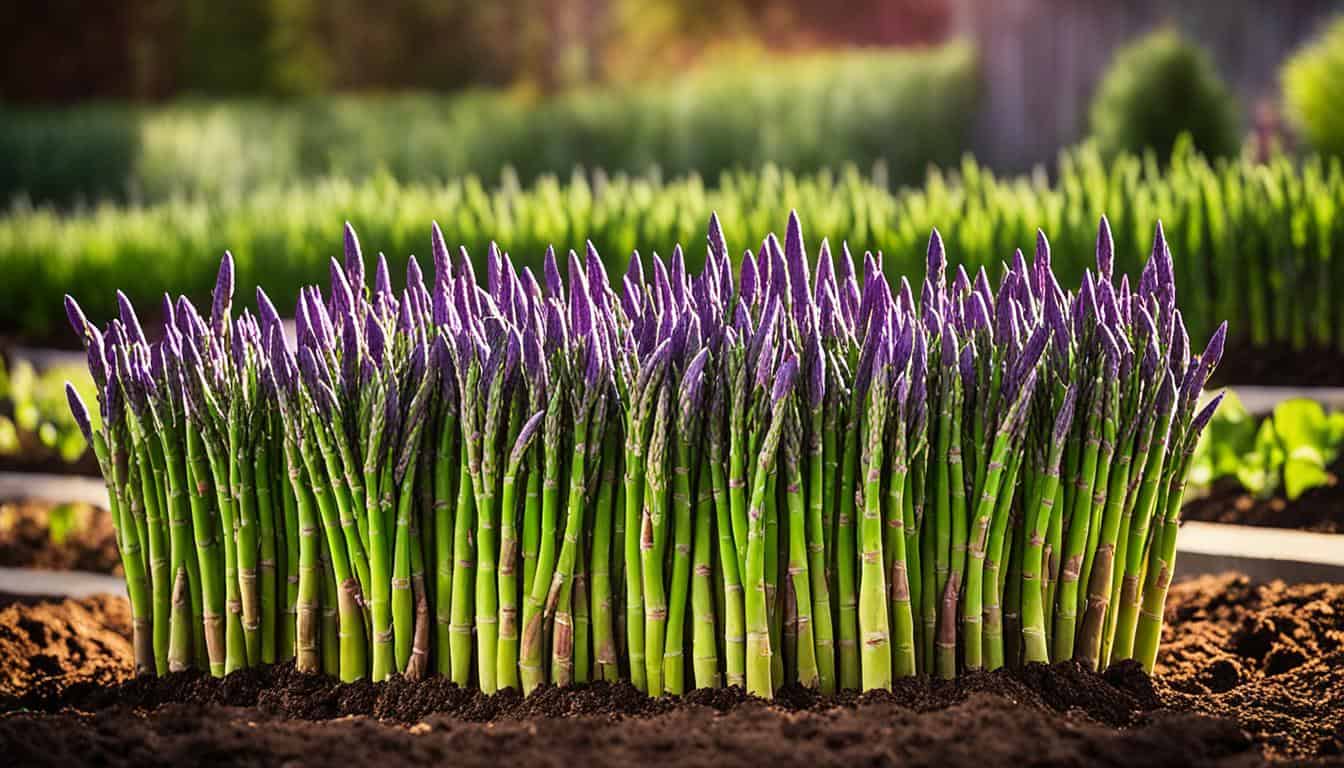
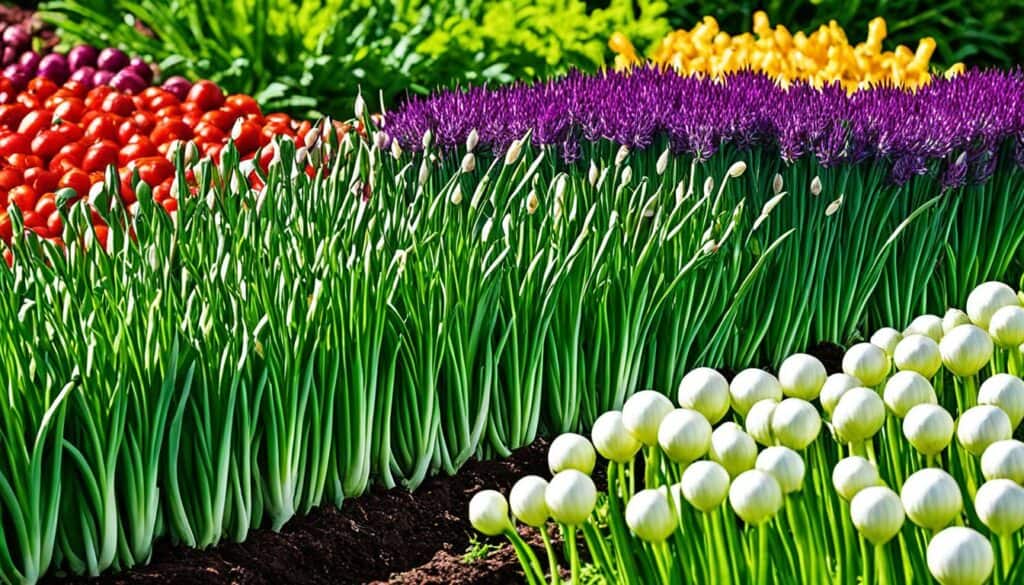
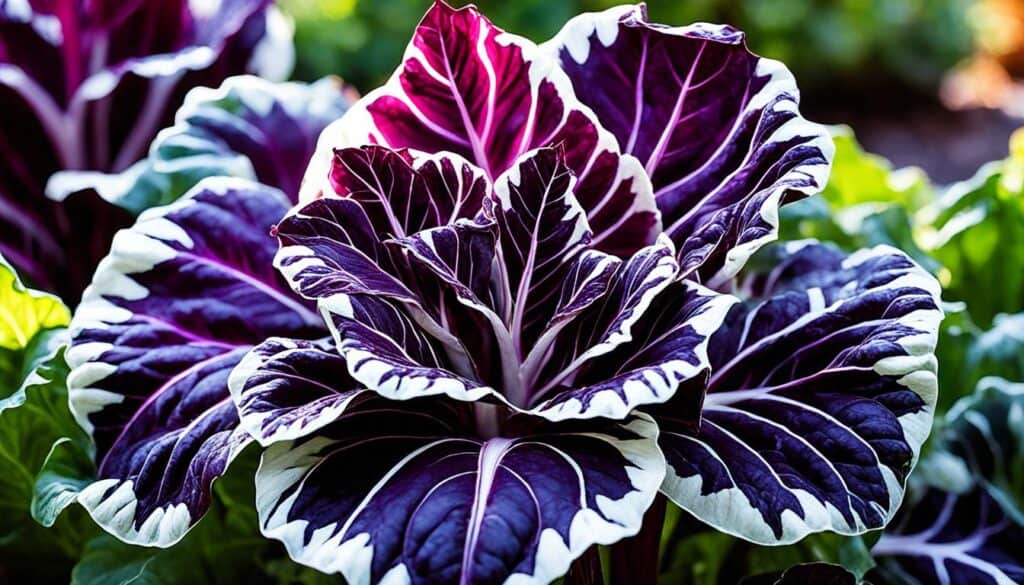
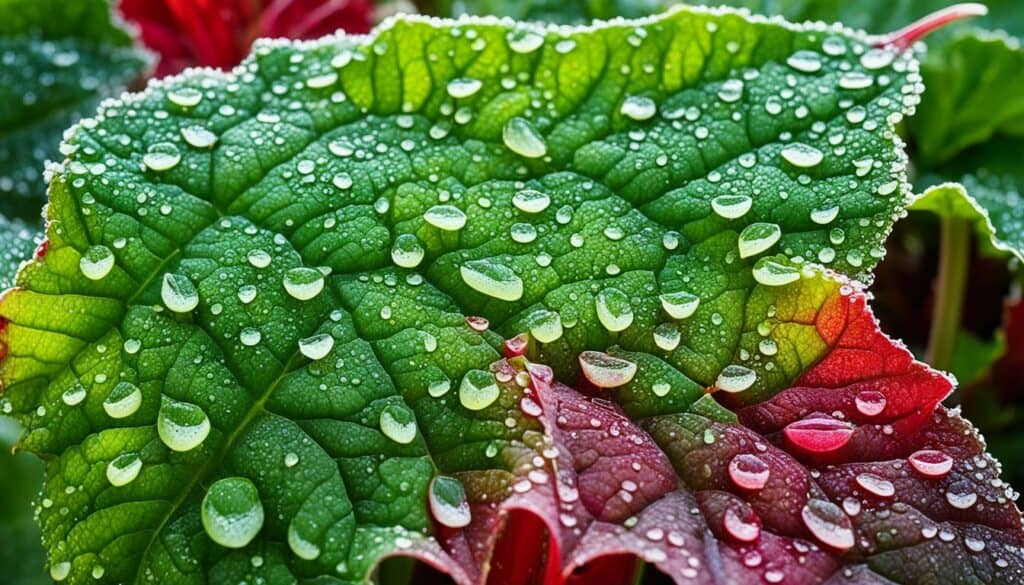
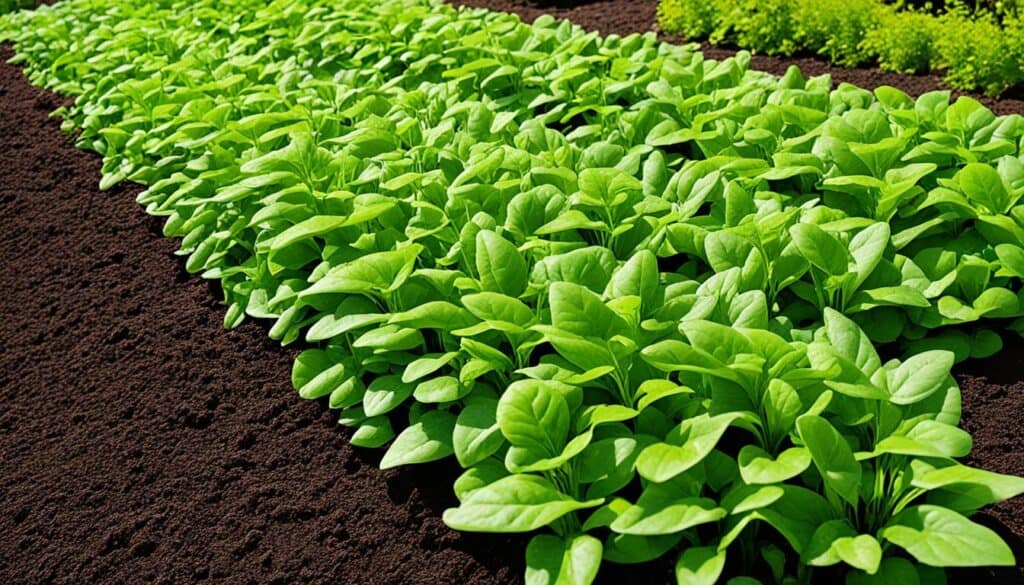
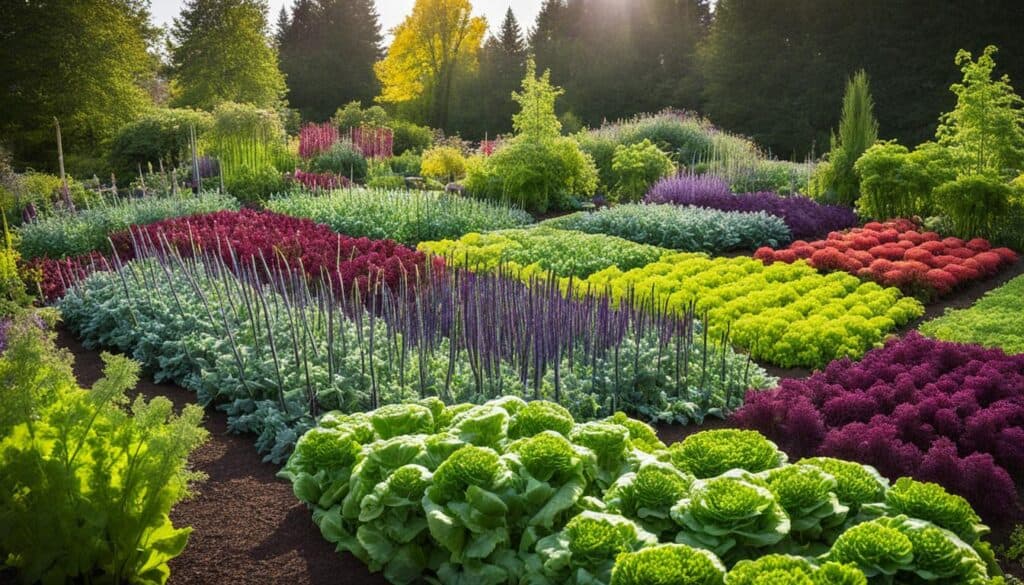



Leave a Reply